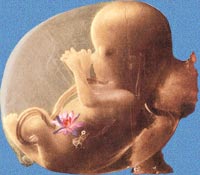|
|
5) The Deconditioned Being
If the whole tragedy could be reversed, and we could start over, how
could we find our real self under the years of accumulated mental
garbage and physical blocks? How to retrieve it from behind the
barriers of psychological scarring and emotional trauma?
Conventional and alternative psychological
approaches – from Freudian psychoanalysis to, say, Primal therapy or
the Family Constellation approach – will prescribe identifying each
issue that is blocking us; reliving it, understanding it, and so,
finally, exorcising it. But that can, and does, take years, is costly,
and requires dependence on a therapist.
What can take years through therapeutic
modalities can be worked through far more quickly with the Osho active
methods, notably Osho Dynamic Meditation.
The beauty of the meditative approach is
that you remain independent, and it doesn't cost you an arm and leg. In
addition, you drop all the analyzing and by pass the mind entirely,
having instead a direct encounter with the unconscious.
The method is an existential springclean,
"detergent for the soul." Anger, grief, pain, jealousy, confusion,
fear: we need only acknowledge and accept their presence and then we
can let them go.
It's true that our bodies, our mental and
emotional worlds all bear scars. So we need allow the areas of trauma
to emerge. We need to shake up the dust that has become engrained in
every crevice of our unconscious.
We need to unfreeze; to mobilize and redirect
our energy so that instead of only fueling the mind – keeping the
conditioning program ticking over – it moves into our body, and into
the frozen depths of the heart, our feeling center and back to its
source.
Panacea
The fire breathing of the first stage of Dynamic
Meditation – fast, deep, chaotic breathing – sets us on the path to
doing just that.
It is the wake-up call to every cell in
the body, to all our acomatosed senses. The depth of breathing
impacts our feeling center, stirring up what has been lying dormant. It
also activates the energy coiled in the sex center so that it becomes
available as fuel for the huge transformation that is now underway.
The body vigorously activated now the energy
that was locked in suppressions begins to melt and can flow into
conscious expression: this is the second stage. Through the
alchemy of release with awareness, we experience thoughts and emotions
as simply different facets of one energy. Really letting rip for 10
minutes anger may suddenly transmute into fear or sadness or despair,
which, in turn becomes, perhaps, childlikeness. That, in its turn, may
become laughter, and so on.
With these first two steps, the negative side
of the process is complete: the basement is cleared of rubbish. The
lotus has been unearthed.
But to stop there would be to leave the job
half done.
Through the acknowledgement, acceptance and
conscious release of all we had suppressed, we have freed up a whole
reservoir of energy. Now that flood needs to be encouraged to move
onwards and upwards. That's where the jumping-till-you-drop and
the shouting of "Hoo!" in the third stage of the method come in.
Landing on the flat of the feet and the loud
shouting of "Hoo!" hammer the sex center, where energy is stored, and
jolt it upwards. At the same time, the forceful and insistent contact
with the floor helps to re-establish our connection with the earth. It
is another way to bring us down from the head, from a cerebral
existence, to feel our roots again.
The unconscious cleared, grounded in our
bodies while our energy moves upwards, by the "Stop!" phase, we
can effortlessly take a dive inside and relax into our essence: the
state of the internal "watcher" or "witness."
It is a moment of homecoming and, quite
rightly, is to be celebrated. That's the last step in Dynamic: celebration
through dance. Celebrating with a body/mind/heart now freed of all
that once stood in the way of our ecstasy.
...Back for more articles
|
|


![]() by Maneesha James
by Maneesha James



